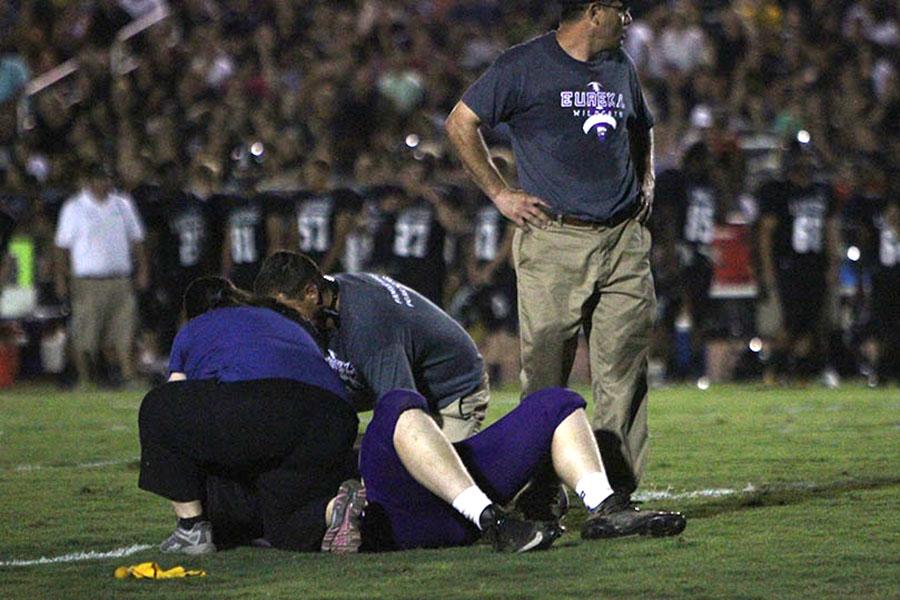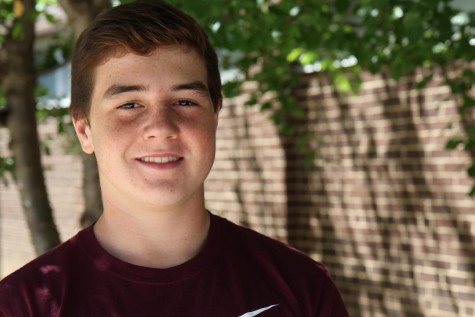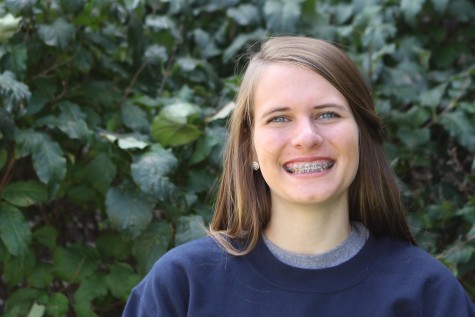Down and out
Playing less along with using the proper trechniques could be the key to avoiding injury
Sam Oligschlaeger (11) is attended to after getting injured vs. Lafayette, Aug 22.
September 26, 2014
“I was injured in a football game, last season against Lindbergh,” David Chan, former JV linebacker, said. “My leg was caught under a player’s pads causing it to hyper extend. I heard a pop, and the next thing I knew I was in pain.
Injury can occur at anytime, to anyone, anywhere, especially in sports.
Severe injuries can cause an athletes career to end before it even starts.
Just being hit at a wrong angle in football or landing wrong in basketball can cause severe injuries such as torn ACLs and Medial Collateral Ligaments or MCL for short.
“The doctor said that I had a torn MCL and ACL, and that I would need surgery on my ACL,” Chan said.
Unfortunately for some like Chan many people do not have time to recover from such serious injury, which can have an affect on an athlete’s next season.
“I feel like my knee had an affect on my decision to play this season,” Chan, said. “I didn’t feel 100 percent confident on it’s ability to withstand the season.”
Being sidelined because of an injury is always undesirable and is something that athletes dread.
“Being injured is annoying because you want to play,” Brendan Kloeppel, guard, said. “However you still have to keep a good attitude and continue to be a good teammate.”
Sports-related injuries are at an all-time high in today’s sports world. More than 3.5 million injuries each year, which cause some loss of time of participation, are experienced by sports participants.
These injuries are not only being seen among professional and college athletes but in youth athletes, as well.
While injuries are often a result of fluke incidents a majority of injuries can be caused by what is known as specialization.
“Specialization is when athletes are focusing on one sport and playing or training for that particular sport year round,” Ms. Rachelle Stebe, certified athletic trainer, said.
The injuries that derive from specialization can then be classified as either overuse or misuse injuries.
Blake Clynes, varsity pitcher, has experienced the consequences of specialization firsthand.
“I had a shoulder impingement, which basically means you lose a lot of flexibility in your shoulder, making it hard to decelerate when you throw,” Clynes said. “It stems from a lot of pitching and throwing and then not stretching afterwards.”
Athletes and coaches may not realize the dangers of specialization and overuse.
“Specialization tends to be a problem,” Ms. Stebe said. “So for example an elbow only has so many throws in it.”
Therefore, when a pitcher exceeds the number of high-powered throws their arm can handle, injuries such as a torn Ulnar Collateral Ligament can occur. If torn, it requires the widely known Tommy John surgery, which is an UCL reconstruction procedure.
“These injuries are in fact a combination of overuse and misuse,” Mr. James Daffron, head baseball coach, said. “As they get into the college and pro levels those guys get Tommy John and other injuries as a result of overuse.”
Proper mechanics and techniques to prevent injuries are where coaches’ input and influence are important.
“I do believe it is a coaches responsibility to do their best to teach athletes how to play safely, but at the same time they are not always to blame for injuries that occur,” Mrs. Becky Reat, mother of three-season athlete Cole Reat, said. “Sometimes it’s the other players you’re competing against that are unaware of proper techniques and how to play the game safely.”
Coaches at EHS make sure kids are properly prepared to ensure their athlete’s safety while competing.
“I play lacrosse in the spring, basketball in the fall and I currently run cross country,” Makayla Jackson, (10) said. “All of my coaches definitely make it a priority that we stretch properly.”
Another way for athletes to prevent injury is by playing more than one sport.
“Playing more than one sport can be beneficial,” Ms. Stebe said. “Continually performing the same motions and actions over time without the appropriate rest phases may lead to overuse injuries.”
Those involved in EHS football know the coaching staff’s take on being a one-sport athlete.
“Football coaches make it a very big deal to be involved in other sports,” Matt Wuelling, JV safety, said. “They want us to have time off but still keep our conditioning where it needs to be. It also helps us become well-rounded athletes.”
Coaches at EHS are proponents of multi-sport athletes because they know the importance of taking time off of to recover and be involved in other sports.
“There are a lot of people out there that think if you only play one sport you’ll be successful,” Mr. Farrell Shelton, head football coach, said. “In fact what they’re finding out is that it damages you.”
It can be hard, however, for some athletes to not focus on one sport and training for that sport, especially with constant pressure from coaches and even parents.
“Parents not letting kids rest is definitely a problem,” Ms. Stebe said.”I’m guilty of it myself, my daughter dances for 10 months out of the year, but she does get a necessary two-month rest period in which doctors like Dr. James Andrews suggests to keep athletes healthy.”
Not only can injuries be hard on an athlete, they can be stressful for parents, as well.
“Both Cole and Cade have been injured playing sports,” Mrs. Reat said. “As a parent it’s scary, but we’ve been fortunate enough to have great coaches and trainers on the field helping with whatever went wrong.”
Of course injuries are going to happen in sports; however athletes and coaches have the power to prevent many injuries and ensure athletes spend more time on the field then standing on the sidelines.
















